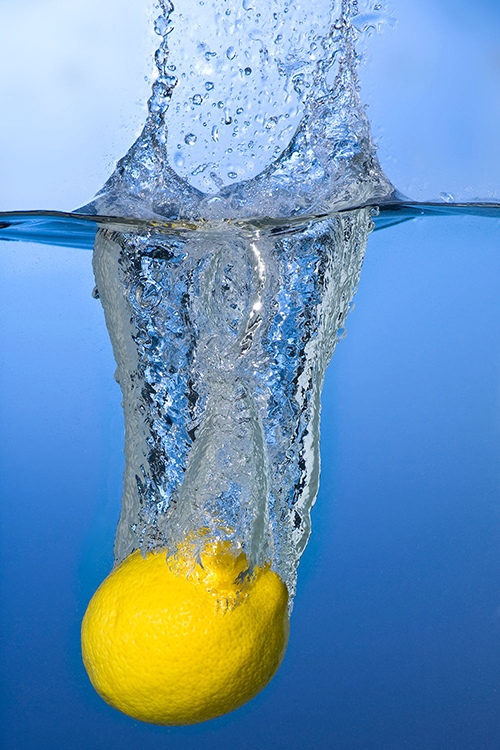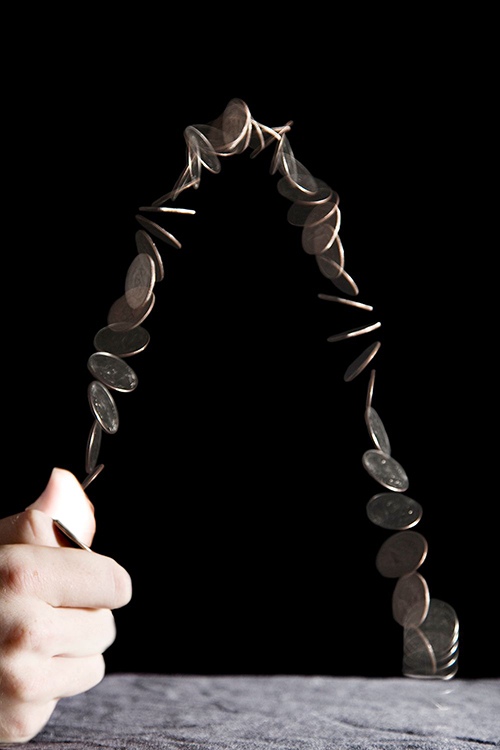Photography of the Ephemeral and Unseen
We are very honored to be able to interview Professor Ted Kinsman at Rochester Institute of Technology (RIT). Professor Kinsman is an outstanding photographer in the realms of science and technology. He has received numerous prestigious national/international awards for his creativity and achievements in photography and image processing including the recent Louis Schmidt Award granted by the BioCommunications Association.
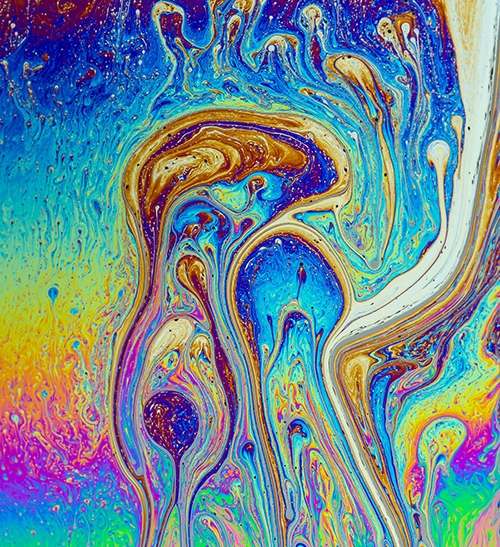
Professor Kinsman constantly invents apparatus to test his new ideas so he is able to produce unique and step-ahead images. His ingenious talents have not gone without being noticed by the media/entertainment industry. His images have been used by magazines, newspapers, Discovery Channel, The X-files TV series, South Park, etc.
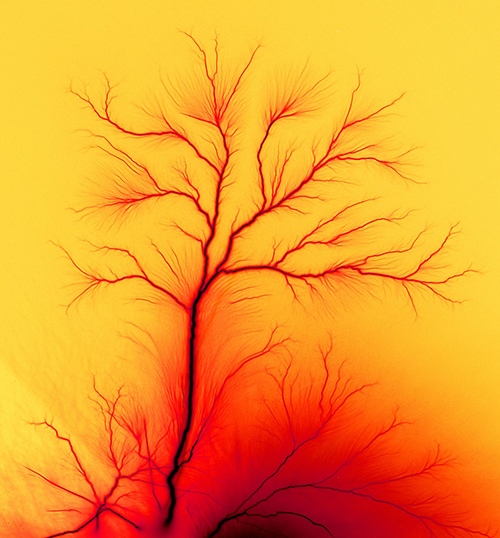
From the following interview, you will be able to know Professor Kinsman in-depth regarding his work and thought process in photography. We hope readers could come away with some insights from Professor Kinsman’s unequivocal brainpower.
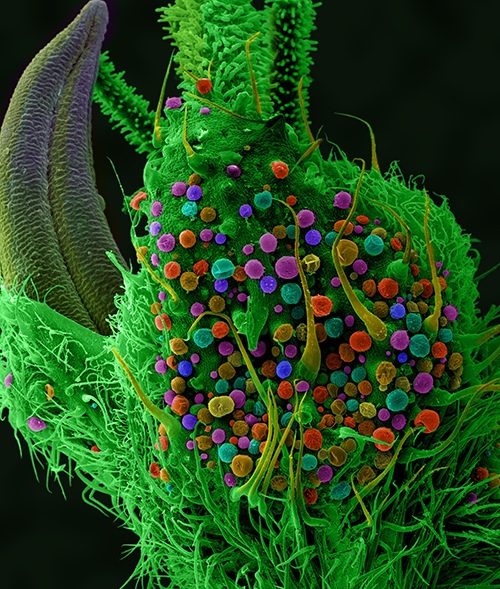
Q: You are extremely accomplished in the field of photography. Please introduce yourself to our readers.
A: I have worked as an optical engineer, a physicist, and a physics instructor before joining the Photographic Sciences Dept. at RIT. In 2019, I was awarded the prestigious Louis Schmidt Award, the highest honor given by the BioCommunications Association. The award recognizes outstanding contributions to the progress of biocommunications. Chosen from a worldwide pool of nominees, I thrive at using physics and technology to make photographs. My recent book, Cannabis: Marijuana Under the Microscope, was one of the reasons I received the honor. The publication has gained tremendous popularity online, getting featured by Business Insider and BNN Bloomberg, among other news outlets.
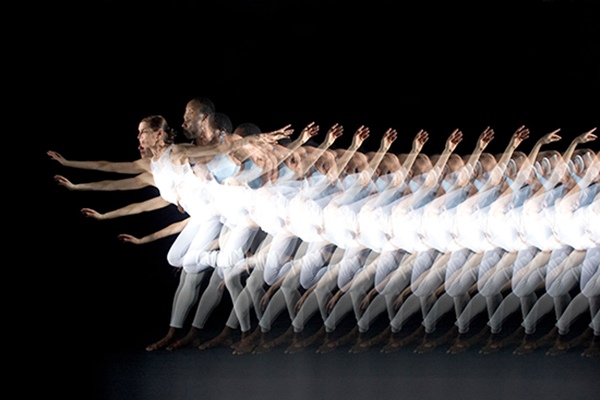
I am one of the few active high-speed photographers able to photograph at times less than 1/1,000,000th of a second. I also photograph in the x-ray region of the spectrum where I continue to explore imagery for books and magazines. I have also built a machine that prints portraits out of coffee, made a copy machine, built a bicycle that makes spirographs as it is ridden, and made a number of other crazy inventions.
My work has appeared on The Discovery Channel, Crime Scene Investigations (CSI), The X-Files, South Park, The Tyra Banks Show, and The Frozen Planet series. I am currently an Associate Professor in the School of Photographic Arts and Sciences (SPAS) where I teach Photographic Instrumentation, Scanning Electron Microscopy, and High-Speed Imaging.
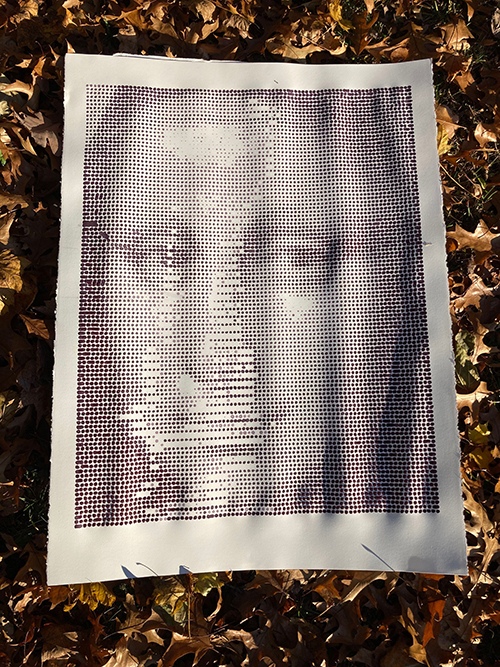
Q: You seem to have an endless source of inspiration and creativity. What does being inspired mean to you?
A: I have always been a creative person; I know enough about the science fields to have a good idea of what has not been done. I very much like to make projects that are new and take students in a new and interesting direction. As far as coming up with ideas, I have notebooks full of ideas that I will never get to.
Q: How have you been staying inspired this semester?
A: Basically, spending time cleaning up a number of projects I have wanted to experiment with.
Here is a water-bell experiment from the Fall.
https://petapixel.com/2020/12/16/water-bell-system-for-high-speed-photography/
Snowflakes
https://youtu.be/I_8Id6KcqCA
soap film photography
https://studio.youtube.com/video/Nz1SxVIxyRM/edit
prototype bike project
https://makeprojects.com/project/the-spirobike-a-bicycle-that-makes-spirograph-designs?projectid=34060
More projects can be seen on my Instagram page
@tedkinsman

Q: I am intrigued by your still shots showing structure from motion (e.g., the water drop splashing), fractal patterns, turbulence. Sometimes you freeze the motion and at other times you let it pass in time to make a blur. What kind of photography do you consider your work to be?
A: Mostly, I consider myself to be a scientific photographer. I use photography to show how interesting science is. My hope is that viewers will take a few moments to ponder how interesting our world is, some young viewers might decide to study science as a career. Most of my images are used to help explain scientific ideas and concepts. There are so many interesting areas of science, that I will never run out of ideas.
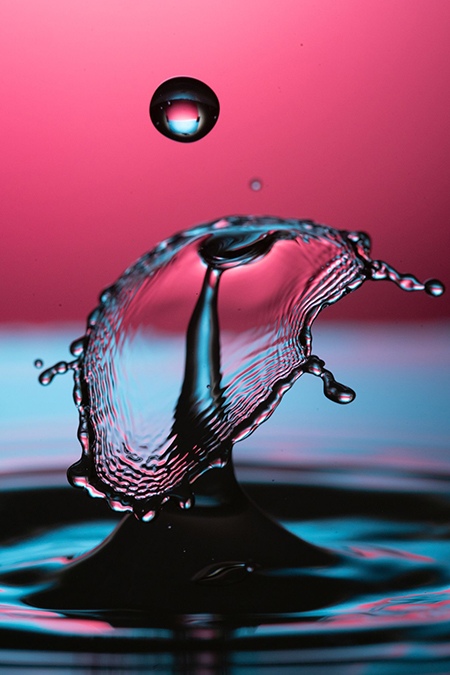
Q: To what extent do your pictures show the orderly structure of nature (e.g., fractal patterns) vs. the more chaotic, yet still beautiful, forms like turbulence?
A: My background is in optics, physics, and mathematics so I try to show interesting mathematics when I can. Many people associate ordered patterns with a lot of symmetry as being highly connected to mathematics, but some of the hot areas of math are currently associated with turbulence or strange flow patterns of liquids. Fluids like water do a lot of strange things, many have not been well photographed, so those are areas that attract me. I am mostly interested in areas of science where not many photographers have imaged things or maybe have not imaged in a few decades. I do a lot of water drip photography involving water drips colliding with other drips with my students. The drips move very fast at a macro level and designing electronic controls for the lights and cameras is challenging for the students. We end up with beautiful images and do not have to work with dangerous topics like breaking glass or explosives. Many of my students use the skills from my classes to work for NASA or Tesla.
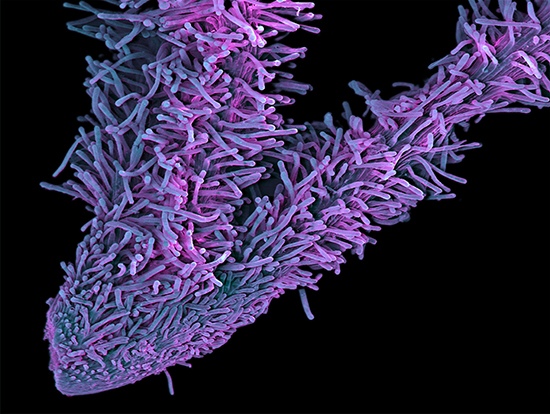
Q: What do you want your viewers to glean from your photographs?
A: I hope the viewers take some time to appreciate science and also take a few moments to think about how this world is so amazing. Towards this goal, I helped organize the Images From Science 3 show. See: https://www.rit.edu/press/images-science-3. This show collected some of the best science images into a book. It was a lot of fun to run, and the show should go on tour when covid ends.
Q: What kind of instrumentation do you use when taking your images?
A: I use several different scanning electron microscopes, I also use different x-ray machines, as well as just about every kind of optical microscope. I am particularly fond of polarizing microscopes, specifically differential interference contrast microscopy. In the realm of high-speed photography, I use a number of high-speed flashes that stop action with a flash of light only 500 nanoseconds long. In general, I build a lot of my own equipment, I build prototypes in wood as well as metal. I machine a lot of special parts. Many projects use microprocessors to control the camera and subject to collect an image at exactly the right time.
Basically, I use a lot of equipment that is not normally associated with photography.
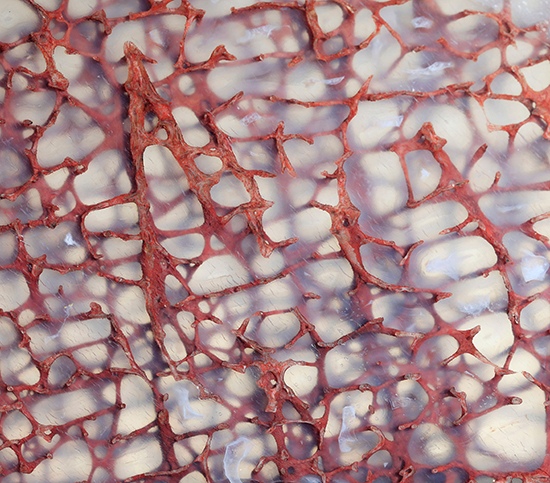
Q: Your image of “A dinosaur bone preserved in clear agate” won the Nikon’s Small 2013 Photomicrography Competition. Please tell us more about this image and what exactly were you looking at?
A: I am always interested in fossils, and once took a summer class in paleontology in South Dakota. So, dinosaur fossils have a fond place in my heart. A friend had some samples of a dinosaur bone that was preserved in clear agate, this allowed the bone to be imaged as if it was not even a fossil. This is an amazing specimen, and it is hard to take a bad picture of it. The preservation is so good it looks like a chicken bone was snapped in half and frozen. It is unknown what species of dinosaur the bone belongs to.
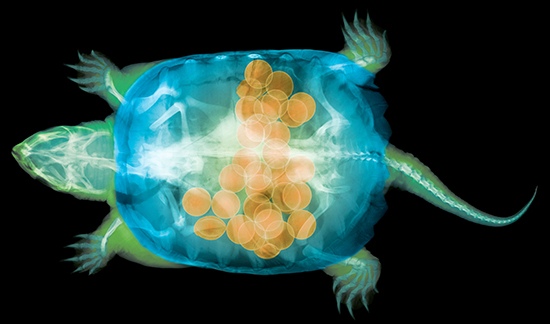
Q: What is your experience leading up to you taking photographs of this type?
A: I am always on the lookout for particularly good samples related to interesting areas of science. Sometimes friends find interesting things, one of my friends had giant gallstones, so I have those in preservatives ready for photography. There is no substitute for good samples. I once stopped to pick up a dead snapping turtle on the side of the road – I had been looking for a good specimen for years for x-ray work. This turtle was filled with eggs, and the x-ray ended up winning the NFS science contest. It also appeared on an album cover that my children thought was cool.
Q: Is there any other scientist-artist who has inspired you in your photography?
A: There are a lot of scientists who have done work that I admire. Harrold Edgerton of MIT, Lenard Nelson, Fritz Goro, Snowflake Bentley, are just a few. I am honored to work at RIT where I teach in the PhotoScience dept. I work with a number of great photographers that keep me inspired by Prof Michael Peres if one of them. Two years ago, I was awarded the Lewis Schmidt award for lifetime achievement in photography which is the same award that some of my photo hero’s also won, so that was quite special for me.
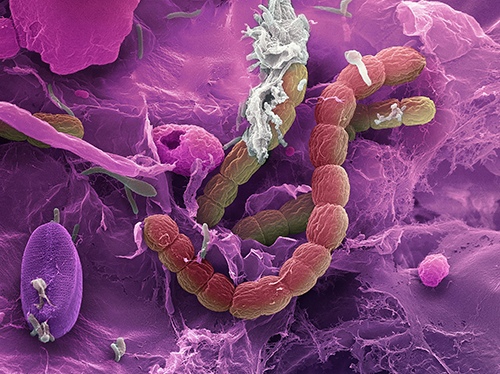
Q: What insights have you had about nature after taking so many images on this scale?
A: I am surprised that there are so many good photographers these days, but so few people taking pictures in the lab. I am a huge fan of collaborating with other photographers, and love teaching and working with my students. Even after all the images I have seen and made, I have only barely scratched the surface. I have notebooks of projects that I know I will never get to. Basically, once I start a project I realize that there are so many images that have never been done.
I guess the biggest insight is that there is so much that has never been photographed in the sciences, and this is not including the new imaging techniques that are introduced just about every year. Modern techniques of imaging in the biological sciences like confocal microscopy, super-resolution, and tabletop CT imaging will open up amazing discoveries. These techniques are so new that everything needs to be imaged again. Science is just so interesting.
Q: Do you have any upcoming projects you would like to share with us?
A: This has been a very busy year and I have been knocking off projects on a monthly basis. Recently I designed a machine to draw math functions with three stepping motors. The students particularly enjoyed seeing it run in the lab and I gave all the students cardioid functions drawn with a red pen on white paper for valentine’s day. My lab is never dull.
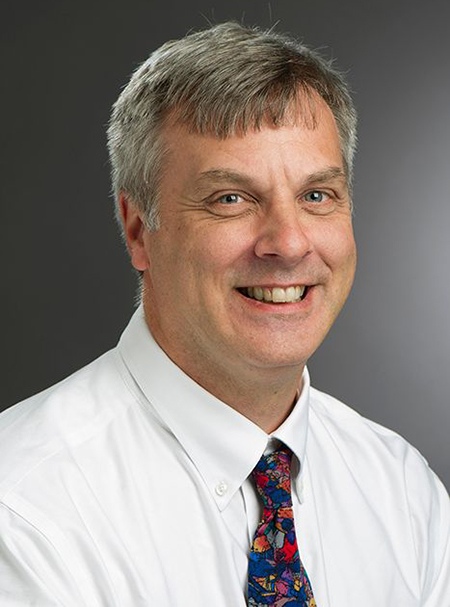
We hope you are impressed as we are after reading the above interview with Professor Kinsman for his outstanding and brilliant works in photography. The following is a short Q&A sent to us from him to provide further information:
How long have you been at RIT?
This is my 8th year at RIT. Before RIT. In the past I have taught physics for 20 years. I have also been an optical engineer, and worked at The Naval Research Labs in Washington DC.
What classes do you teach?
I teach High-Speed Photography, Capstone, Magnified Imaging, and Photographic instrumentation.
What drew you to photographic arts and sciences?
I really love teaching and use photography to get young students interested in the sciences.
What general advice would you give to students?
Treat your time at RIT as a job interview. We are often asked to recommend students for jobs. If you come to class on time, are prepared, and do a good job with a positive attitude, it will be very easy to recommend you for a position.
What is your favorite thing about working for RIT?
My fellow faculty are some of the world experts in each of their fields. It is a pleasure to come to work and get to discuss the fine points on a problem with such knowledgeable people.
What is your favorite thing about teaching?
I enjoy interacting with enthusiastic students excited about learning. This is especially true about the students that bring up interesting problems in need of a solution.
What do you do outside of teaching?
I write for several national magazines and websites, I enjoy traveling with my wife and family. I like to hike and camp in the Adirondacks. From time to time I do work for television shows.
What side projects are you currently working on…tell us about them.
I have just designed and built an infrared light-sheet detector that I have modified to detect snowflakes. The electronics measure the velocity of each snowflake that falls in a 4×4 inch area. The terminal velocities are correlated with flake size and how many snowflakes fall per minute. Currently, I am working on a machine that drips water in time with a midi music file for a music video project.
Share a few fun facts with us!
I have worked at an observatory (Pine Mountain in Bend Oregon). I recently wrote a book Cannabis: Marijuana under the Microscope with images from my scanning electron microscope I kept in my living room. Recently, I did a book interview on Bloomberg News.
